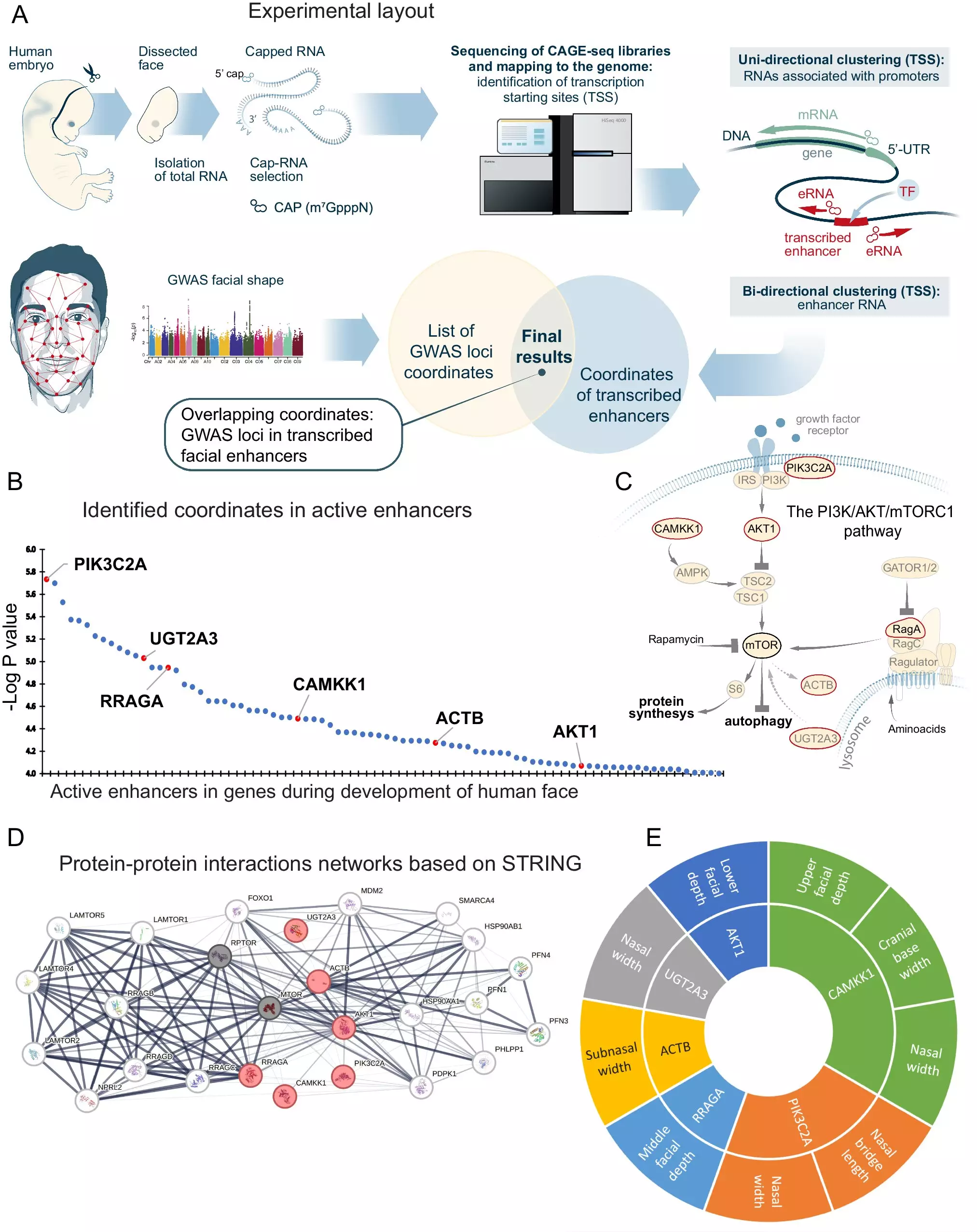Recent research conducted by an international team of researchers has shed light on the potential impact of maternal protein consumption on the facial development of offspring. While heredity has long been recognized as a major factor in determining facial features, this study introduces a new perspective by considering the role of environmental conditions during pregnancy, specifically the diet of pregnant women.
The researchers began by sequencing genes from human embryonic facial tissue, where they identified enhancers related to genes associated with the mTORC1 pathway. This pathway, known for its involvement in cellular food processing, was found to play a significant role in early-stage skeletal formation. To further explore the impact of this pathway, experiments were conducted on mice and zebrafish.
In their experiments, the researchers both activated and deactivated the mTORC1 pathway, observing notable differences in facial structure. Activation of the pathway resulted in thicker nasal passages and larger facial features, while deactivation led to elongated faces in zebrafish and enlarged snouts in mice. These findings suggest that the mTORC1 pathway plays a crucial role in modulating facial development.
The Influence of Maternal Diet on Facial Development
Building on their initial findings, the research team delved into the impact of maternal diet on the mTORC1 pathway and subsequent facial development. By feeding a group of mice a high-protein diet, they observed differences in signaling pathways compared to those on a normal diet. The embryos of mice exposed to excess protein displayed lower jawbones and larger nasal capsules, highlighting the potential impact of maternal protein consumption on facial morphology.
The study’s findings not only underscore the significance of maternal diet in shaping facial development but also raise questions about the broader influence of dietary factors on fetal development. As researchers continue to unravel the intricate relationship between maternal nutrition and offspring traits, new possibilities for understanding and potentially influencing facial features through dietary interventions may emerge.
This research highlights the nuanced interplay between maternal protein consumption, the mTORC1 pathway, and facial development in offspring. By expanding our knowledge of these interactions, we gain deeper insights into the multifaceted factors that contribute to the formation of facial features and pave the way for future studies exploring the broader implications of maternal diet on fetal development.

